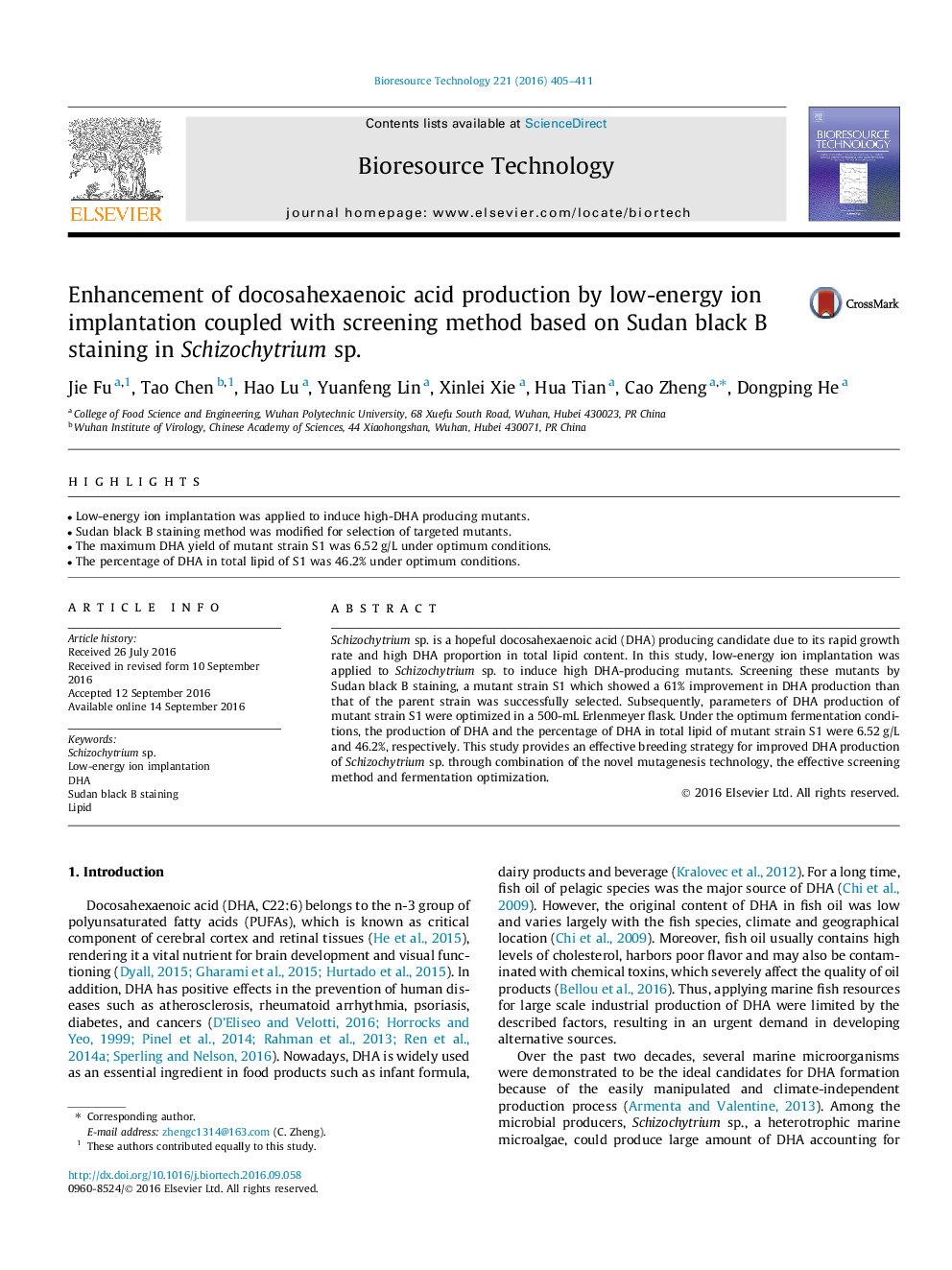| Article ID | Journal | Published Year | Pages | File Type |
|---|---|---|---|---|
| 4998091 | Bioresource Technology | 2016 | 7 Pages |
â¢Low-energy ion implantation was applied to induce high-DHA producing mutants.â¢Sudan black B staining method was modified for selection of targeted mutants.â¢The maximum DHA yield of mutant strain S1 was 6.52 g/L under optimum conditions.â¢The percentage of DHA in total lipid of S1 was 46.2% under optimum conditions.
Schizochytrium sp. is a hopeful docosahexaenoic acid (DHA) producing candidate due to its rapid growth rate and high DHA proportion in total lipid content. In this study, low-energy ion implantation was applied to Schizochytrium sp. to induce high DHA-producing mutants. Screening these mutants by Sudan black B staining, a mutant strain S1 which showed a 61% improvement in DHA production than that of the parent strain was successfully selected. Subsequently, parameters of DHA production of mutant strain S1 were optimized in a 500-mL Erlenmeyer flask. Under the optimum fermentation conditions, the production of DHA and the percentage of DHA in total lipid of mutant strain S1 were 6.52Â g/L and 46.2%, respectively. This study provides an effective breeding strategy for improved DHA production of Schizochytrium sp. through combination of the novel mutagenesis technology, the effective screening method and fermentation optimization.
